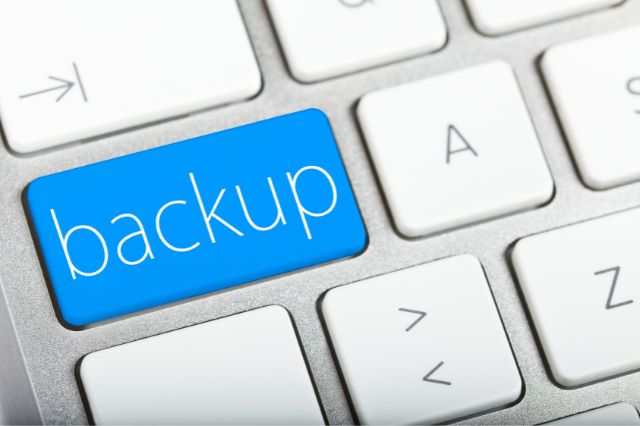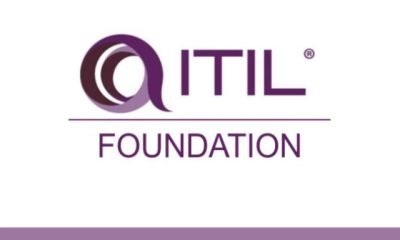Tech
Skills Every Full Stack Developer Needs in 2021


In 2019 Stack Overflow surveyed over 90,000 developers globally, and 51.9% of the participants turned out to be full stack developers. And that number will continue increasing given the current scenario we live in where we can’t lift a finger without using a piece of software.
There are applications for everything you can think of. From social media to apps that test your kissing skills! Companies are continually looking for new ideas to create apps, websites, and platforms to hook an audience. For this, they are on the look-out for a full-stack developer who can help them put their ideas and objectives into practice by building applications that consumers can’t get enough of.
What Is Full Stack Development?
Full stack developers combine the programming of the client side or the frontend of the website and the server side or the backend of the website to create an end-to-end solution for a web application to run smoothly. In other words, full stack development involves engineering a website or mobile application that has an engaging user-interface (frontend) that also smartly handles data (backend) behind the scene to provide quick solutions to a user query.
What Is Frontend Development?
Frontend development involves creating a visible part of the website where users will be engaging. The screen where users enter a query or submit the required details to be directed to a solution or a specific dashboard forms the frontend.
A web application needs to be easily-navigable and visually appealing to encourage more users. Therefore, while programming, the frontend developer must take care of both the structure and the web application function. The frontend programming languages are:
- HTML
- CSS
- Javascript
- Jquery
What Is Backend Development?
Backend development involves data handling behind the curtains. When a user enters a query on a web server over the internet, the query is forwarded to the web application’s server. The web application server looks into the database for the desired answer and sends it across to the web server. The database and the application server, and the operating system form an integral part of backend development. The backend programming languages are::
- Java
- PHP
- Ruby on Rails
- Python
- .Net
Why Companies Hire Full Stack Developers?
It’s impossible to know why companies hire full stack developers without understanding what their role is.
A full-stack developer is someone who can provide the flexibility companies seek among their tech hires, thanks to their all-encompassing knowledge of both backend and frontend development. Yes, specializations do matter, and specific projects may require designated engineers for backend and frontend coding. However, for many businesses, a full-stack developer is all it takes to create a great piece of programming sporting a deft user-interface teamed with efficient back-end programming involving the server and the database.
Startups also have a high demand for full-stack developers who can help develop a Minimum Viable Product, a crucial first step in the journey of a product or API application before its official launch. At this stage, full-stack developers contribute by programming the initial features of a product that either makes it a deal-maker or a deal-breaker when the first set of feedback from customers is collected.
2021 would be a manifestation of more businesses embracing automation and, full-stack developers would be in demand due to the following skills:
- Their backend and frontend programming knowledge.
- They are able to handle the server end and the client end of a web application streamlining data structure and algorithm.
- Their comprehensive understanding of development allows them to troubleshoot without second assistance.
- A single full-stack developer can engineer a complete website or application, unlike a specialist who knows only one of the areas of a software solution. For example, a System Administrator takes care of only the operating system and the servers. A full-stack developer will handle the operating system, the servers, the UI/UX, and the database.
Do You Have What It Takes To Be A Full Stack Developer?
In 2021, the competition among companies wanting to incorporate the most efficient technologies in their products is going to be higher. The bar will keep rising in terms of launching software products that make the lives of consumers easier.
So, as a full stack developer, you have to know your frontend and backend like the palm of your hands. You must be acquainted with all the latest tools and languages to take care of all types of market demands.
The Key Skills Required Of Full-stack Developers Are:
1. Frontend Skills: Frontend skills involve mastering the programming languages you would need to build an efficient user interface. The first step is to build your foundation with HTML and CSS.
HTML – HyperText Markup Language forms the basis of the frontend development of a website. You would implement HTML to define each part of the website’s functionality that the user would be viewing. The point of HTML is to inform the browser of the website’s structure for it to interpret paragraphs, headers, links, images, and other elements.
CSS – If HTML is the structure, CSS or Cascading Style Sheets adds aesthetics to the structure. Imagine pretty fonts, visually appealing backgrounds and colors, animation and 3D effects.
JavaScript – After structure and aesthetics a good web application will have all the features users can engage with. This includes contact forms, personal details forms, sign up/login windows, drop-down menus, maps, video players – anything where a user would be completing a task on the website. Good knowledge of JavaScript will help you add user-interactive features to a website.
Jquery – Learning Jquery will help you use JavaScript on the website with ease. For example, while implementing AJAX calls (loads personalized content without installing them into the HTML), JavaScript may feel like a complicated language to code. However, with Jquery, you can do it with ease. So is the case with DOM manipulation and other complicated tasks like HTML event methods, CSS manipulations etc. Plus, it comes with many plugins to help you accomplish almost any task.
2. Backend Skills: Your backend skills would determine how you use coding and business logic to connect the web server with the application server and the database. The following languages are instrumental in implementing the codes that would ensure a web application runs smoothly.
Python – It’s a versatile, easy-to-learn language that works on various operating systems. You can use Python’s multiple web application frameworks to implement automation wherever necessary and create prototypes (mock applications). Python has many web frameworks that you can use to create competitive web applications that also incorporate machine learning.
Java – As a full-stack developer you are going to handle APIs, IoT, big data, scientific applications etc. Java could be your ticket to developing amazing software solutions. Plus it’s a beginner-friendly language. For instance, memory management and pointers are complex parts of programming. With Java you can accomplish these tasks with ease.
PHP – PHP has a close affinity with other programming languages such as Java, .NET, and Ruby. The popular open-source framework Laravel is a PHP framework and it’s still relevant to learn PHP as a backend language because as a beginner, you may end up writing code that contains errors or bugs. But, PHP can make any code work! By the way, WordPress was built on PHP.
Ruby on Rails – It’s a stable language unlike other languages like JavaScript/Node.js that change constantly. So, that’s a relief for new aspirants looking to create their first full-stack web application using one language. With Ruby you can develop an entire application without having to leave the framework.. It’s the ideal language for creating the currently trending, single-page application.
.NET – .NET could be your key to learning the principles of a good software design and building a robust web server. It’s a Microsoft supported software development framework that businesses use to build a product that works as a web-based application, desktop software and also has a cloud infrastructure.
MEAN – In the recent past MEAN has become quite popular with full-stack developers as it contains a complete list of frameworks required to accomplish end-to-end web application development. It is based on JavaScript, which means you can avoid the hefty task of learning too many full-stack programming languages. The frameworks are:
- MongoDB, which can be used for the database.
- Express.js can be used to develop a web application.
- AngularJS is for frontend development.
- NodeJS is for back-end development.
3. Developing APIs – Full-stack development is incomplete without the development of secure APIs that are meant to connect mobile or web applications to databases and servers. Learning REST or Representational State Transfer will help you develop architectures for APIs. A good thing about REST is that you can change the code on the client-side or the server-side anytime without interrupting each other’s operations.
4. Understanding Version Control System – You would be probably working with a number of developers who are continuously modifying the source code. By honing your version control system skill, you would be able to keep a track of the modifications in the code. This will help you compare between various code versions and revert to a previous version in case of an error. GIT, CVS, SVN, Mercurial are some of the most popular version control software tools you can learn.
5. Cybersecurity Skills – Though most companies will have cybersecurity specialities in their tech teams, knowing something about security testing could be a good addition to your resume. To conduct security testing you would have to know the full stack programming languages like Java, C/C++, PHP, Rubi. Perl. Lisp. Python, JavaScript, Apple’s SWIFT, SQL by heart.
6. Understanding Algorithm and Data Structure – A full stack developer is a problem solver. Therefore, a good company would be evaluating a candidate’s knowledge of data structure and algorithms. By studying the data structure and algorithms you would be able to formulate logical statements.
Data coding, for example, is an integral part of data structure and algorithms. By learning data coding you would manage to set the fields to collect the desired data efficiently and fix bugs and troubleshoot coding.
7. Testing Skills: End-to-end testing is essential in foolproofing the workflow of an application. This involves integration tests that combine components of the units to check whether they are providing the desired results collectively. Apart from that, there are unit tests that entail testing a single component to see if it’s working properly.
8. Design Skills: As a full stack developer you would also need to improve your UI/UX skills to create a responsive design for the website you are developing. UI/UX tools you might consider learning are Adobe XD, Marvel, Axure RP, InVision, Framer and Figma. Extensive knowledge of these tools will help you experiment with designs. Plus, there are many ways to get better at your designing skills, right from learning from examples to recreating designs for existing apps and asking for feedback on a forum like Reddit.
Wrapping Up
Arriving at the best possible piece of code for handling hefty data is a common theme in a full stack developer’s life. So, if you want to be one, start by updating yourself regarding new methodologies and languages. A great way to do this is by joining a community to learn new techniques. You have to be creative when choosing the right tools and formulate a pathway for an application to work. Besides all the technicalities, you also need to be a good listener who understands and verifies client/company requirements before starting a project to avoid a mismatch between expectations and delivery.
The company or the client for whom you are developing a software solution may not be well-versed in technological terms. As a full stack developer, your job is to understand their expectations and guide them through the methods. Verify if your understanding and their expectations are in tandem before you begin.
If you have a passion for innovation and coding is your lifeblood, all you need to do is polish and widen your knowledge of backend and frontend programming languages. Also, work on your understanding of data structure, algorithms and software design. Do that, and getting a high-paying job as a full stack developer with a good company is just a matter of time.


Tech
Car Battery Technology: Decoding the Jargon


Hey there, fellow car enthusiast! Have you ever found yourself scratching your head when confronted with the baffling array of technical terms surrounding car batteries?
Fear not, for today, we’re going to demystify the world of car battery technology. So buckle up, sit back, and let’s dive into the nitty-gritty of what powers your beloved ride.
Understanding the Basics: Car Battery 101
Let’s start with the basics. A car battery is like the heart of your vehicle, providing the electrical energy needed to start the engine and power all the electrical components. Without a healthy battery, your car simply won’t budge. But what exactly goes on inside this seemingly ordinary box of power?
Inside the Battery: The Anatomy of Power
Imagine you’re peering under the hood of your car, and there it is—the humble car battery. But don’t be fooled by its unassuming appearance; inside, it’s a powerhouse of chemical reactions. Picture this: tiny, energetic ions zipping around, generating electricity through a process called electrochemical reaction. It’s like a mini chemistry lab right in your car!
Anecdote: Ici, the Unsung Hero
Speaking of chemistry, let me tell you a little anecdote about a word you might have encountered in the world of car batteries: ici. Now, you might wonder, what on earth is ici?
Well, it’s short for “”internal resistance.”” Sounds complicated, right? But here’s the thing—ici plays a crucial role in determining how efficiently your battery can deliver power to the starter motor.
Think of it as the traffic jam on the road to starting your car. The lower the ici, the smoother the journey. So next time you start your engine effortlessly, remember to thank ici for its silent but vital contribution.
The Power of Connection: The Role of Clamps
Ah, the trusty clamps—the unsung heroes of car battery replacement. These seemingly simple metal contraptions are what connect your battery to the rest of your car’s electrical system. But have you ever stopped to think about the significance of these tiny components?
Anecdote: The Saga of the Lost Clamp
Let me share a little anecdote with you about clamps. Picture this: You’re in the middle of nowhere, stranded with a dead battery. You pop open the hood, ready to jump-start your car, only to realize that one of the clamps is missing!
Panic sets in as you frantically search your trunk for a replacement. Turns out, that little clamp holds more power than you ever realized. Moral of the story? Always double-check your clamps before hitting the road!
Deciphering the Code: Understanding EXIF
Now, let’s talk about a term that might sound more at home in the world of photography than car batteries: EXIF. But fear not, it’s not as complicated as it seems.
In the realm of car batteries, EXIF stands for “”electrolyte level indicator.”” Think of it as a built-in sensor that keeps tabs on the health of your battery’s electrolyte levels.
Anecdote: The Tale of the Mysterious EXIF Reading
Imagine this scenario: You’re diligently checking your car battery’s EXIF reading, hoping for a clean bill of health. But to your dismay, the reading is off the charts! Panic sets in as you wonder what could be wrong with your trusted car battery.
After a thorough inspection, you realize that a loose connection was causing false readings. Crisis averted! This little anecdote reminds us that sometimes, the simplest solutions can save the day.
Navigating the World of Car Battery Replacement
Now that we’ve unraveled some of the mysteries surrounding car battery technology, let’s talk about the inevitable: car battery replacement. Whether your battery is on its last legs or you simply want to upgrade to a more powerful model, understanding the ins and outs of replacement is crucial.
Choosing the Right Battery: A Personalized Approach
When it comes to choosing a new battery for your car, one size does not fit all. Factors like climate, driving habits, and vehicle specifications all come into play. So before you rush out to buy the first battery you see, take a moment to consider your unique needs. Trust me, your car will thank you for it.
Anecdote: The Quest for the Perfect Replacement
Picture yourself standing in front of a towering wall of car batteries, feeling utterly overwhelmed. This was me not too long ago, on a quest to find the perfect replacement for my trusty old battery.
But with a little research and guidance from the experts, I emerged victorious, armed with the perfect battery to keep my car running smoothly for years to come.
So there you have it, folks—car battery technology, decoded! From the inner workings of your battery to the crucial role of clamps and EXIF readings, we’ve covered it all. Remember, when it comes to your car’s battery, a little knowledge goes a long way.
So the next time you pop open the hood of your car, you’ll be armed with the confidence to tackle any battery-related challenge that comes your way. Happy driving!
Tech
Why You Need Office 365 Backup: A Complete Guide


Businesses and organizations rely heavily on cloud-based solutions like Microsoft Office 365 to streamline operations and enhance productivity.
While Office 365 offers robust tools for communication and collaboration, many users need to be made aware of the importance of data backup within the platform.
This comprehensive guide will explore why you need Office 365 backup to safeguard critical data and ensure business continuity.
Data Loss Happens: Protect Your Information
One of the most compelling reasons to invest in Office 365 recovery backup is the reality of data loss. Despite the robust infrastructure and security measures, data can still be lost due to various factors.
Human errors, such as accidental deletions or overwrites, are common occurrences. Malware attacks, data corruption, and system outages can also result in data loss. Recovering lost data can be a smooth process with a backup solution.
Retention Policies vs. Backup: Know the Difference
Microsoft Office 365 provides retention policies and litigation hold features, which can help you recover deleted items within a specified timeframe. While these features are valuable, they differ from a dedicated backup solution.
Retention policies are limited by their timeframe, and once data is purged from the recycle bin, it becomes unrecoverable. Microsoft Office 365 backup solutions offer more extensive and flexible options for data recovery, allowing you to restore data beyond Microsoft’s retention limits.
Compliance and Legal Requirements: Be Prepared
Many industries and businesses are subject to regulatory compliance and legal requirements that mandate data retention and protection. Failing to meet these requirements can result in severe consequences, including fines and legal actions.
Microsoft 365 backup solutions provide the tools and capabilities to ensure compliance with data retention and protection regulations, helping you avoid potential legal issues.
Email Data: A Critical Asset
Email communication is at the heart of modern business operations. Critical information, essential documents, and sensitive conversations are often exchanged via email. Losing access to email data, whether due to accidental deletions or technical issues, can disrupt your business and lead to significant productivity loss.
Office 365 recovery and backup ensures that your email data is securely stored and readily available when needed.
SharePoint and OneDrive: Protecting Collaborative Content
Office 365 offers powerful collaboration tools through SharePoint and OneDrive. These platforms store and share documents, spreadsheets, and other important files. With the increasing reliance on these services, it’s essential to have a backup solution in place to protect your collaborative content.
Office 365 recovery and backup ensures that your SharePoint sites and OneDrive files are safeguarded against data loss.
Security Threats: Guarding Against Ransomware and Malware
Cybersecurity threats, such as ransomware and malware attacks, pose a significant risk to organizations. These malicious entities can encrypt or corrupt your data, making it inaccessible and demanding ransom payments for its release.
Office 365 recovery and backup solutions provide an added layer of protection by allowing you to restore your data to a point before the attack, mitigating the impact of security breaches.
Business Continuity: Minimize Downtime
Downtime can be costly for businesses, affecting productivity and revenue. When data is lost or inaccessible, it can lead to prolonged downtime as you scramble to recover essential information.
Microsoft 365 backup and recovery solutions ensure that you can quickly restore your data and minimize the impact of disruptions, helping you maintain business continuity.
Conclusion: Safeguarding Your Office 365 Data
Office 365 backup is not just a luxury; it’s necessary for businesses and organizations of all sizes. Data loss can occur for various reasons, and with a dedicated backup solution, recovering critical information can be more accessible.
Office 365 recovery and backup offers peace of mind by ensuring your data is protected, compliant with regulations, and readily available when needed. Investing in a reliable backup solution is essential in safeguarding your Office 365 data and ensuring the continuity of your business operations.
Tech
Off-Grid Communication Network Development: Harnessing Solar Power Solutions for a Brighter Tomorrow


Imagine finding yourself in a remote village, surrounded by lush greenery and the sounds of nature. There’s a certain magic in these untouched landscapes, where the connection with the outside world is often tenuous. It’s in these places that the importance of off-grid communication networks becomes glaringly evident.
In this guide, we’ll explore the transformative power of solar energy in developing robust off-grid communication systems.
A Certain Need for Connectivit
In a world driven by constant connectivity, the word “certain” takes on a poignant significance. Imagine a certain scenario where a village, tucked away from the bustling urban chaos, yearns for a certain connection. The need for reliable communication is certain, and yet, the infrastructure remains uncertain. This is a narrative that resonates across countless remote communities.
You, as an advocate for change, can play a pivotal role in transforming uncertainty into certainty. By understanding the power of solar energy and its applications in off-grid communication, you can bring about a certain positive change in these marginalized spaces.
Drowning in Isolation: The Anecdote of Connectivity Struggles
Let’s delve into a brief anecdote to illustrate the gravity of the situation. Picture a community surrounded by water, isolated from the rest of the world. The irony lies in the fact that they are drowning in isolation. The struggle for connectivity is palpable, the need for a lifeline to the outside world certain.
In this scenario, the power of solar solutions becomes evident. By harnessing solar energy, you can empower these communities to rise above the waves of isolation. Solar power calculations come into play, determining the energy needed to bridge the gap and pull these communities from the depths of disconnect.
The Calculation of Solar Power Energy: Illuminating Connectivity
Now, let’s talk numbers, but fear not, we won’t drown you in complex equations. Calculating solar power energy is simpler than it sounds. It involves understanding the energy needs of a communication network and then harnessing the sun’s rays to meet those needs.
You might be wondering, how does this calculation work? Imagine this: a small village with basic communication needs requires a certain amount of energy to run its systems. By calculating solar power energy, you can determine the number and capacity of solar panels needed to meet these requirements. It’s like solving a puzzle, with each solar panel a piece that fits perfectly into the connectivity picture.
Infants and Innovation: A Tale of Empowerment
Consider the anecdote of a village with infants, where the laughter of children echoes through the air. Despite the joy, the concern for their future is certain. In these remote areas, access to medical information and emergency services is often limited. Imagine the transformative power of a reliable communication network fueled by solar energy.
By investing in solar power solutions, you provide a lifeline for these communities. The ability to connect with medical professionals, access educational resources, and ensure timely assistance in emergencies becomes certain. The innovation lies not just in technology but in the positive impact it has on the lives of these infants and their families.
Solar-Powered Connectivity: Breaking Ground
As you embark on this journey of off-grid communication network development, remember that you’re not just calculating solar power energy; you’re calculating the potential for change. Picture breaking ground in a village where the first solar panels are installed, and the hum of connectivity begins to drown out the silence of isolation.
This is where perplexity and burstiness in your approach become crucial. The perplexity lies in navigating the complexities of off-grid communication, and the burstiness comes from the sudden surge of empowerment that solar solutions bring.
Empowering YOU to Make a Difference
Now that you understand the essence of solar power solutions in off-grid communication, it’s time to take action. YOU, yes you, have the power to bring about a certain change in the lives of those struggling with connectivity. It’s not just about calculating solar power energy; it’s about illuminating a path to a brighter, more connected future.
As you delve into the world of off-grid communication network development, keep the anecdotes in mind. The certain need for connectivity, the drowning isolation, and the infants awaiting empowerment – these stories fuel the urgency for change. YOU are not just a reader; you’re a potential catalyst for transformation.
Solar Energy: The Heartbeat of Connectivity
In the heart of every off-grid communication network lies the pulsating energy of solar power. This energy is not just calculated; it’s harnessed to create a heartbeat of connectivity that resonates through the remotest corners of our world. As YOU step into this realm of innovation, remember the certain power you hold to break the chains of isolation.
In conclusion, the word “certain” takes on a new meaning in the context of off-grid communication. It’s a certainty that connectivity is a fundamental human right, and it’s a certainty that solar power solutions can pave the way for a more connected, empowered future. So, embrace the certain challenges, calculate solar power energy with determination, and become a beacon of change in the world of off-grid communication network development.



 Health11 months ago
Health11 months ago6 Best Ways to Get Quality Sleep



 Social Media11 months ago
Social Media11 months agoLinda Yaccarino: Twitter’s New CEO from NBCUniversal



 Work11 months ago
Work11 months agoFive Things Employees Look for in a Job Role



 shopping12 months ago
shopping12 months agoEssential Tips for Buying Jewelry Online



 Tech12 months ago
Tech12 months agoWhat Are the Advantages of ITIL Foundation Certification for Organizations?



 Education9 months ago
Education9 months ago7 Tips for Writing Short Stories That Captivate and Resonate



 Entertainment11 months ago
Entertainment11 months ago5 Famous Gamblers and Their Most Memorable Quotes



 Business11 months ago
Business11 months agoHow to Design and Create a Poster from Scratch




















